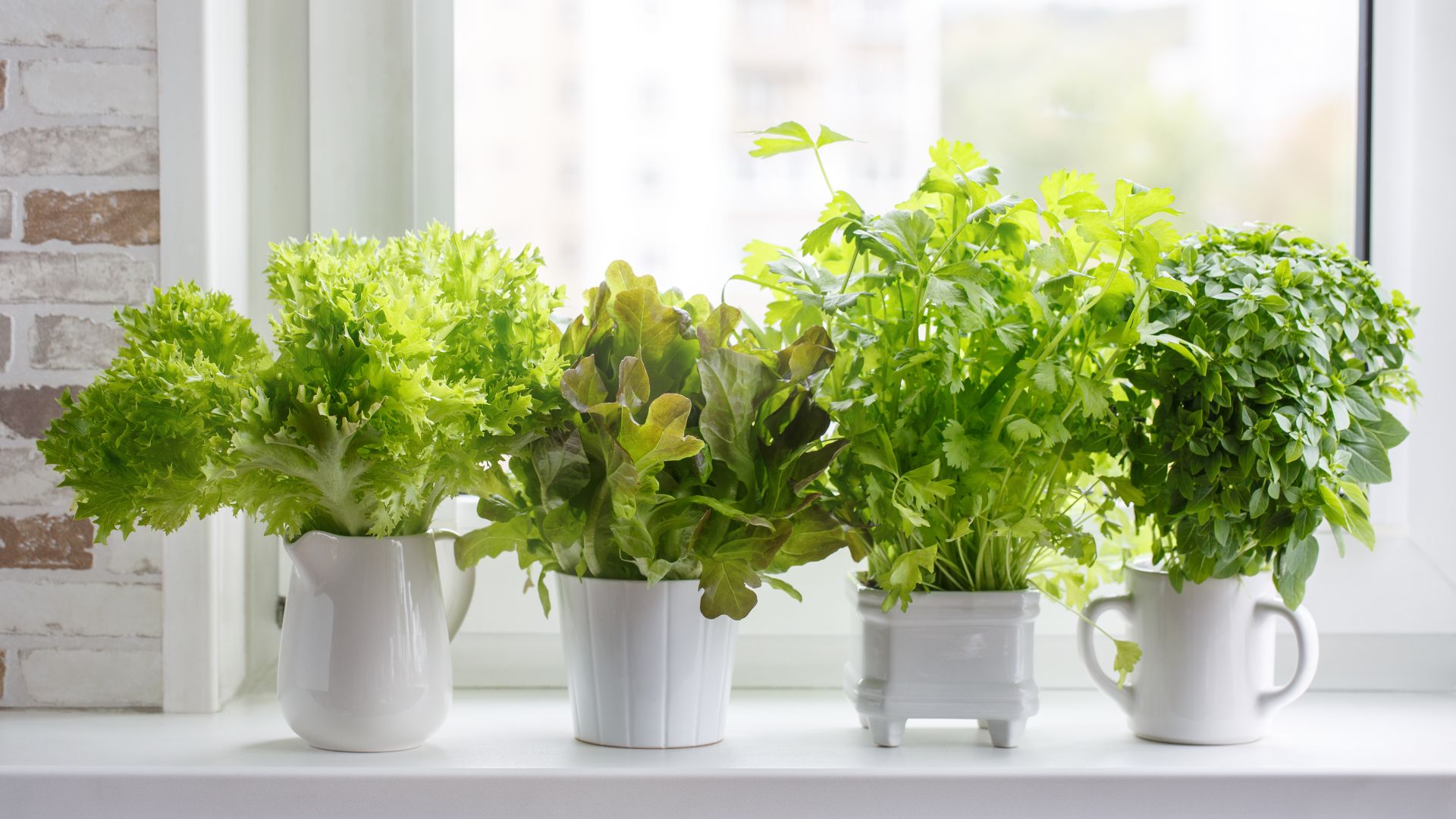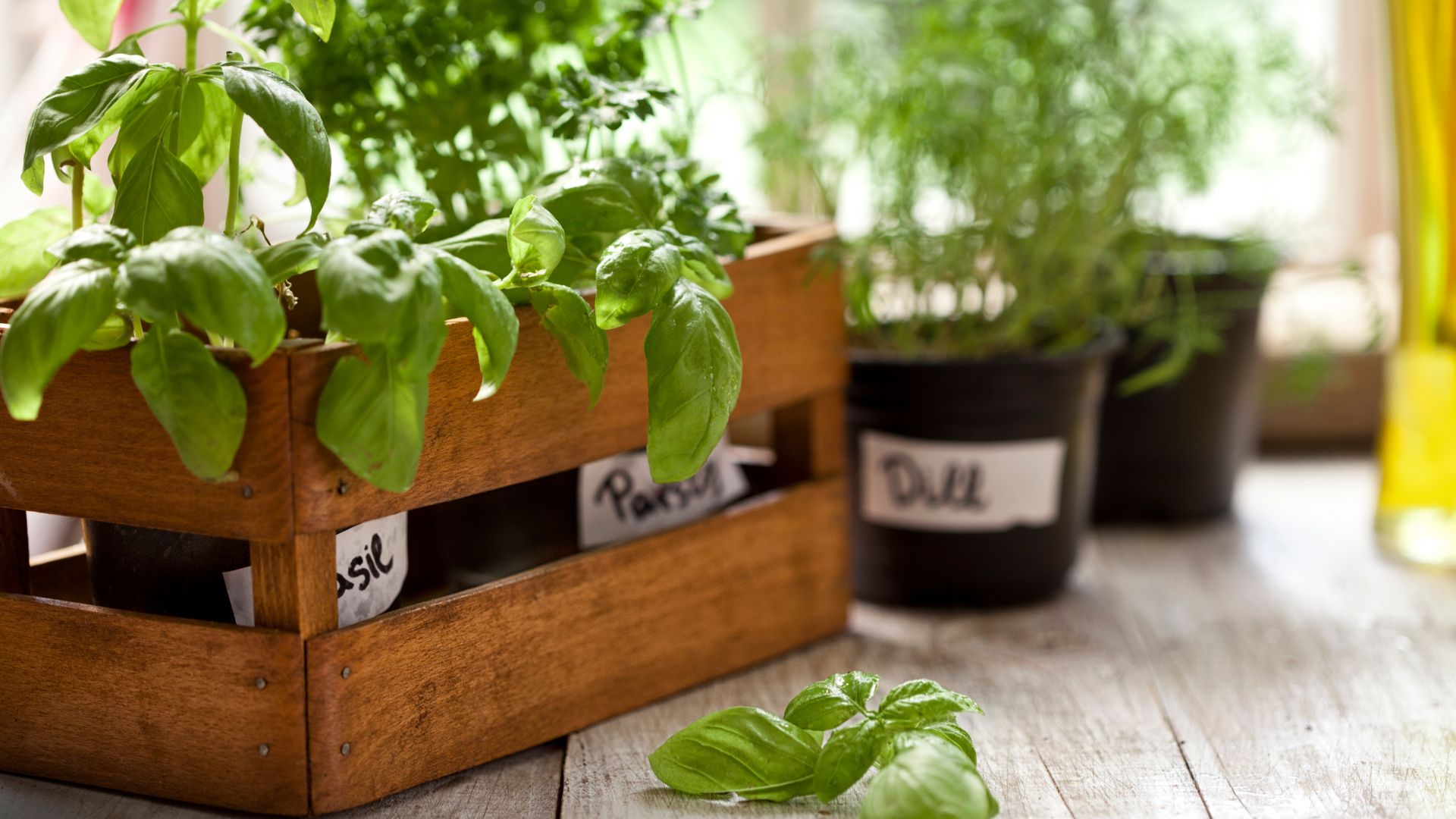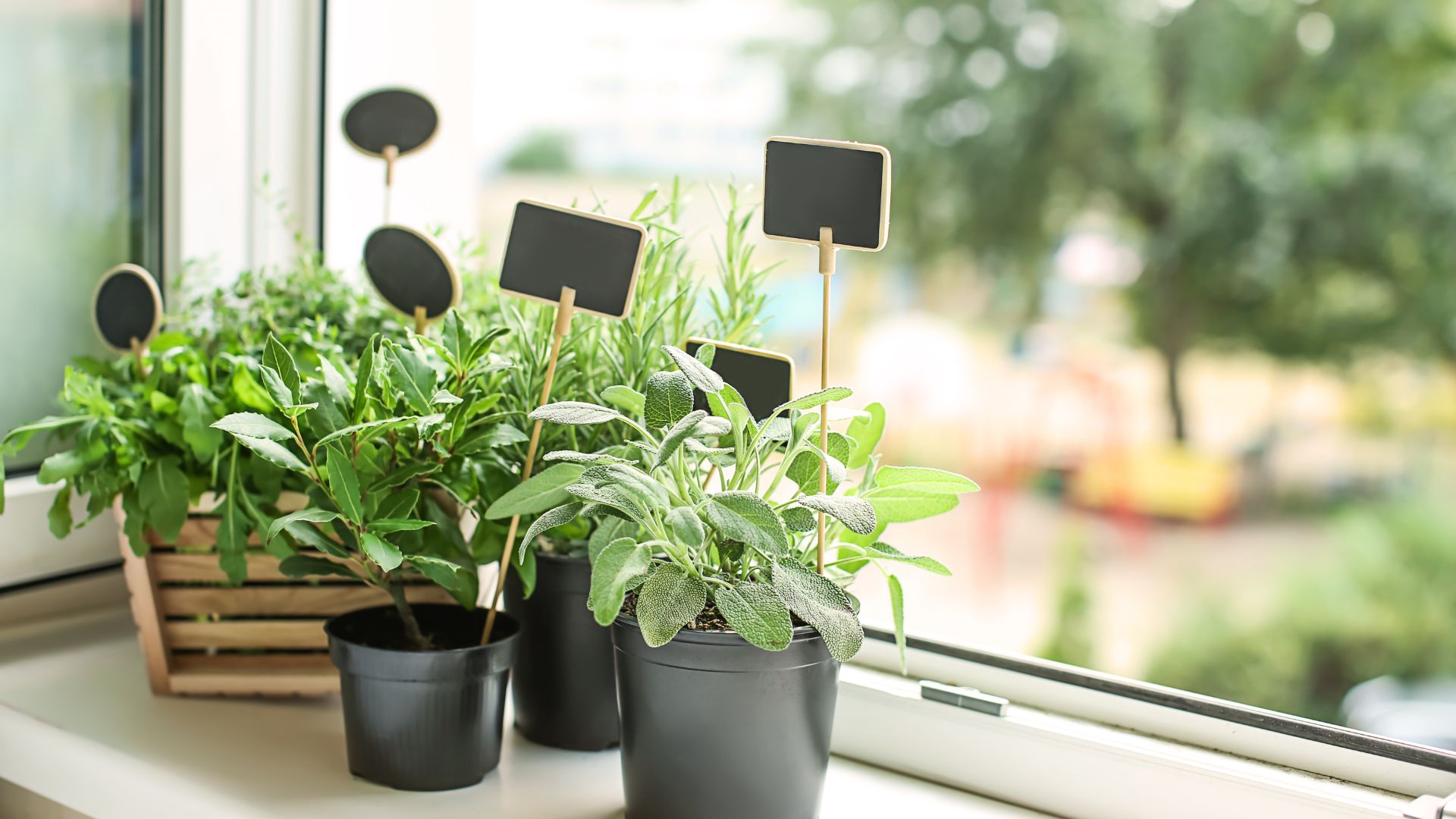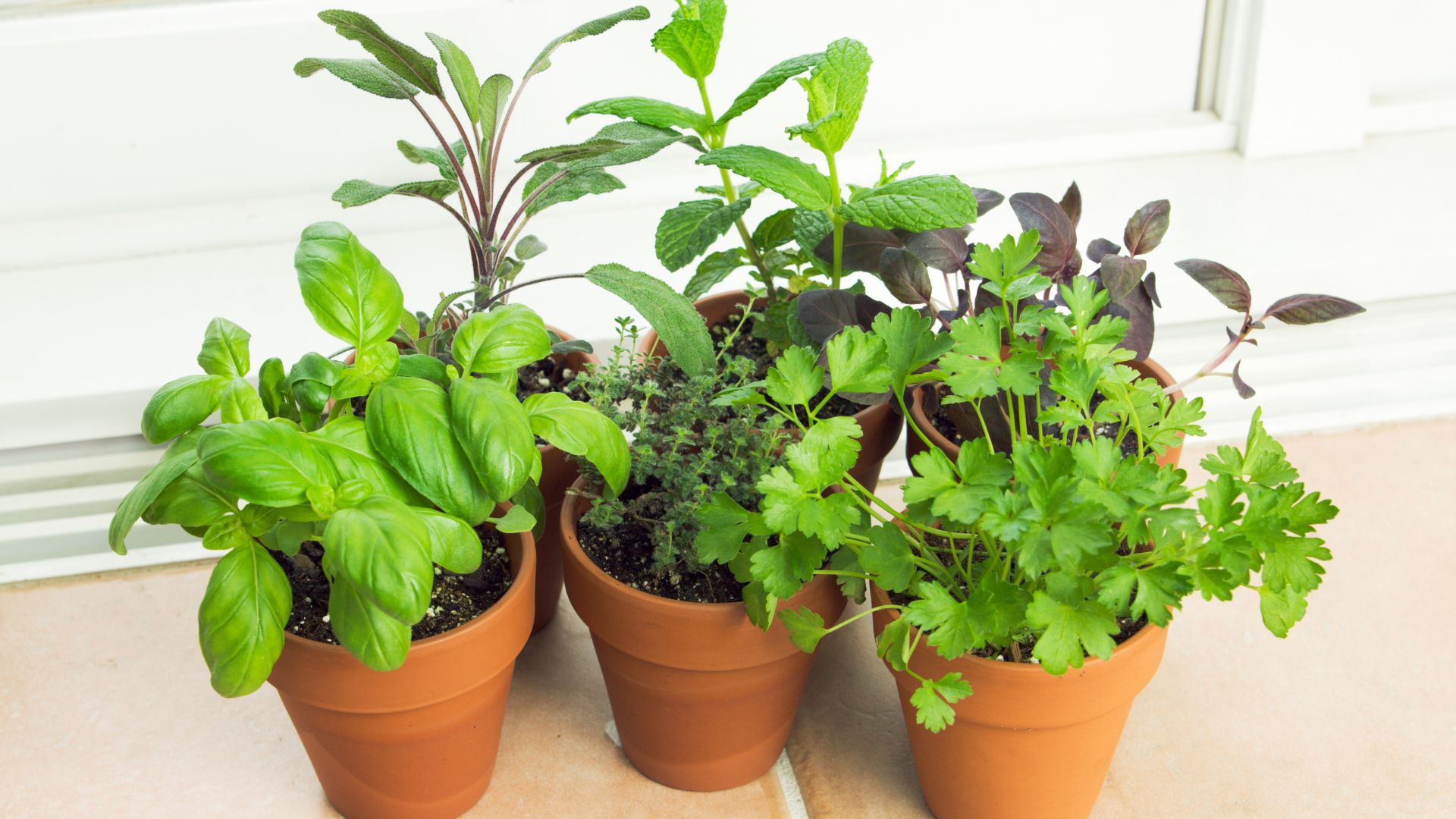An indoor herb garden injects nature’s essence into your kitchen, turning it into a hub of freshness and flavor. Whether you’re embarking on a kitchen remodel or just looking to sprinkle some greenery around, adding an indoor herb garden will revolutionize both your cooking and your space’s look. This guide walks you through establishing and nurturing a thriving indoor herb haven.
The Basics of an Indoor Herb Garden
Choosing the Right Herbs
The best herbs for an indoor garden are those that thrive in controlled environments. Here are 10 herbs that are ideal for an indoor garden, due to their ease of growth, maintenance requirements, and usefulness in cooking:
- Basil – Thrives in warm, well-lit environments, perfect for adding fresh flavor to dishes.
- Mint – Requires minimal care and spreads easily, offering a refreshing aroma and taste.
- Cilantro (Coriander) – Grows quickly in cooler conditions, ideal for adding to salads, salsas, and Asian dishes.
- Parsley – Prefers moderate to bright light, versatile in both cooking and as a garnish.
- Chives – Needs minimal space, offering a mild onion flavor that’s great in salads and as a garnish.
- Thyme – Thrives in sunny conditions, a drought-tolerant herb with a strong, earthy flavor.
- Rosemary – Prefers bright light and well-draining soil, known for its aromatic flavor in cooking.
- Oregano – Loves sunlight and moderate watering, essential for Italian, Mexican, and Greek dishes.
- Sage – Requires plenty of sunshine and light watering, perfect for dishes that need a slightly peppery flavor.
- Lemon Balm – Grows well in shady areas, and adds a lemony scent and flavor to teas and dishes.
- Dill – Prefers bright light and regular harvesting to prevent it from becoming leggy. Its feathery leaves are perfect for seasoning dishes.
- Tarragon – Enjoys plenty of light and well-drained soil; its distinctive flavor enhances chicken, egg, and fish dishes.
- Lavender – Needs full sun and infrequent watering; adds a floral, slightly sweet flavor to desserts and drinks.
- Marjoram – Similar to oregano but with a sweeter taste; thrives in light, well-drained soil and is great in soups, stews, and meat dishes.
- Lemongrass – Thrives in full sun and requires regular watering; cooks commonly use its stalks in Asian cuisine and tea for their lemony flavor.
Light and Water: Essentials for Growth
Herbs require at least six hours of sunlight daily. If natural light is limited, consider using grow lights. Watering needs vary among herbs; generally, you should keep the soil moist but not waterlogged. Over-watering is a common pitfall in herb gardening.
Pots and Soil: The Foundation
Use pots with drainage holes and saucers to prevent water from spilling onto your kitchen surfaces. Opt for a high-quality potting mix designed for indoor plants to ensure proper nutrition and drainage.
Incorporating a Garden into Kitchen Remodeling
Here are some ways to seamlessly integrate an indoor herb garden into your kitchen design:
Built-in Planters:
-
- Consider incorporating built-in planters in your kitchen island or countertops.
- These can be designed with drainage solutions to keep your herbs healthy and your surfaces dry.
- Built-in planters make your herbs easily accessible while cooking and can be a striking visual feature.
Dedicated Herb Shelves:
-
- Install dedicated shelves near a window or under kitchen cabinets equipped with grow lights.
- Shelves can be customized to fit the aesthetic of your kitchen, from modern minimalist to rustic farmhouse.
- This option allows for flexibility in plant arrangement and easy access to herbs.
Hanging Herb Gardens:
-
- Utilize vertical space by installing hanging planters or a drip system for a living wall of herbs.
- Hanging gardens can be placed near windows or areas with sufficient artificial light, saving valuable counter space.
- They add a dynamic element to your kitchen’s decor, bringing in layers of greenery at eye level.
Window Herb Boxes:
-
- If your kitchen has a sunny window, consider installing a window box both inside and outside.
- Window boxes can provide ample light and air circulation for herbs while being easily reachable from the kitchen.
- They offer a picturesque view and can be designed to match window trims and kitchen styling.
Integrating into Existing Layouts:
-
- For kitchens with limited space, small pots and containers can be placed on windowsills, open shelving, or side tables.
- Choose containers that complement your kitchen’s color scheme and materials for a cohesive look.
- Utilizing spaces like the sides of cabinets or the refrigerator top can also be innovative ways to incorporate herbs without needing a full remodel.
Maintaining Your Indoor Herb Garden
Prune your herbs regularly to encourage growth and prevent them from becoming leggy. Harvesting the top leaves first can help your plants grow fuller and bushier. Keep an eye out for pests and diseases, and use natural remedies to address any issues.
FAQ
What are the best herbs to grow in an indoor garden?
Basil, mint, cilantro, parsley, and chives are among the best herbs for indoor gardening due to their adaptability and minimal space requirements.
How do you grow herbs inside the kitchen?
To grow herbs in the kitchen, ensure they receive at least six hours of sunlight daily, use pots with drainage, and keep the soil consistently moist.
What herbs are good to grow in the kitchen?
Herbs that thrive in the kitchen include basil, mint, cilantro, parsley, and chives, offering fresh flavors at your fingertips.
How do you make a homemade indoor herb garden?
Start with selecting the right herbs, use suitable pots and potting mix, ensure adequate light, and maintain proper watering practices for a successful homemade indoor herb garden.

An indoor herb garden enriches your kitchen with life, color, and flavor. By incorporating these green essentials into your kitchen remodeling or daily routine, you embrace the joy of gardening and the taste of fresh herbs. With the right care, your kitchen can become a hub of freshness and vitality.




